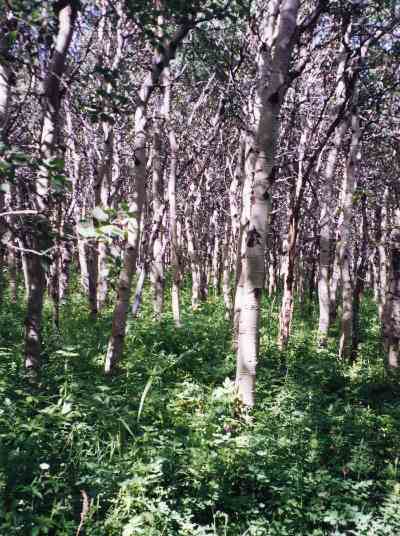
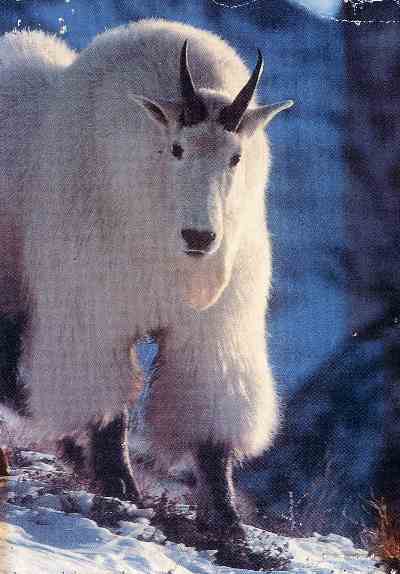
| Route 66 | Cities | Beaches |
 |
 |
Getting There |
Take The Bus |
Lodging |
Restaurants |
Hiking |
Backpacking |
| Glacier National Park is the wildest territory in the national park system. It straddles the Canadian border high on the Continental Divide. One road circles the park, the Burlington Northern Santa Fe Railroad cuts along its Southern boundary, and one road, Going to The Sun highway, cuts across the park three months of the year. That's it. The rest of the park belongs to the backpackers, the animals and the Blackfeet Nation, which retains its ancestral homeland along the Eastern boundary. As its name implies, the park is home to the greatest glacier collection in the lower 48, and despite global warming most of them are still intact. | 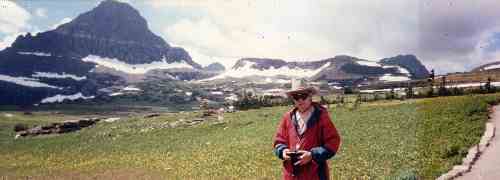 |
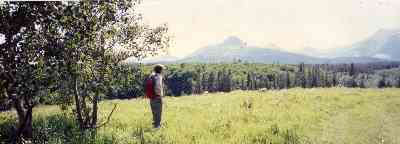 |
Glacier is closed eight months of the year, buried under deep drifts. In fact, it never really stops snowing there. A weeklong visit in July or August is almost certain to encounter at least 24 hours of snow, ice, sleet, howling winds and low temperatures. The high country trails are only passable six weeks every Summer. If you want to escape the heat and humidity back home, this is the place to come. It takes until about June 15 to plow Going To The Sun Highway, and it begins drifting back over in September. Summer comes to the lodges down in the valleys, but never really comes to the high country. |
| Glacier is a long three day drive from Kentucky. The usual route is Wisconsin Dells the first night, Dickinson, ND the second night, and East Glacier the third night. A better strategy is Amtrak. Take The Cardinal to Chicago, change to the Empire Builder, and enjoy the greatest passenger train still on the rails in North America. Book sleeper compartments. Your ticket includes three meals a day in the dining car. On the second night you'll arrive in East Glacier around dark. As you get off the train, the Glacier Park Lodge is up the walkway, as shown at right. This is one of those great old lodges done in National Park Rustic architecture, with huge lobby and massive timber construction. | 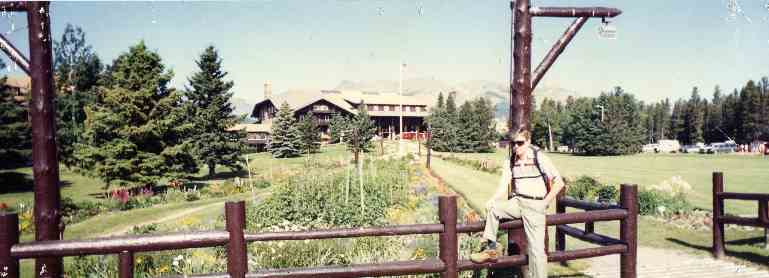 |
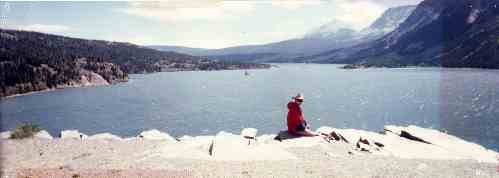 |
If you come by train, lack of vehicle will not be a problem. The park was designed before the advent of the automobile. if you don't want to backpack, you can Lodge Hop. This is a special arrangement in which you spend one night at each of the seven lodges, riding the special red convertible buses from one to the other. Dayhiking trails go out from each lodge. After a week, you will have seen a little bit of the whole park. If you are into backpacking, trails go up from every lodge. You can either head out directly from the main lodge at East Glacier, or take the "Jammers," as the buses are called, around to another lodge and backpack in from there. No matter where you come out, you can bus back to East Glacier and catch the train home. |
| If you want to hike deep into backcountry but not camp out or cook, you can hike to the two wilderness chalets. They sit atop the Continental Divide a day's walk from the road. You can stay several days, dayhiking out in a different direction each day, but returning at night to a hot meal and a nice bed. If you want to see other parts of the park but worry about grizzlies or weather, Glacier Park Wilderness Guide Service offers guided trips. Your host is trained and certified to deal with whatever problems you might encounter and cooks gourmet meals. They take families or youth groups and are very good with children. We recommend the guide service if you're a new leader with inexperienced kids but want an epic wilderness experience. | 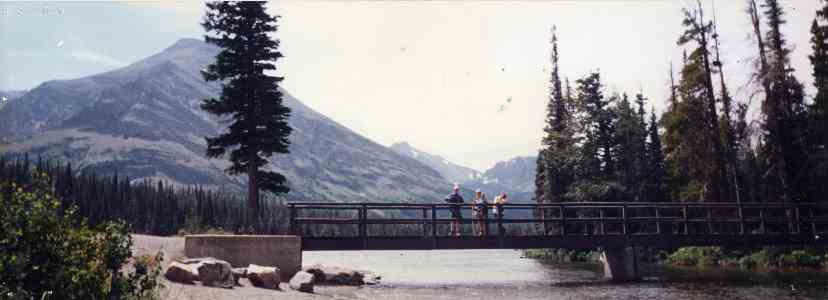 |
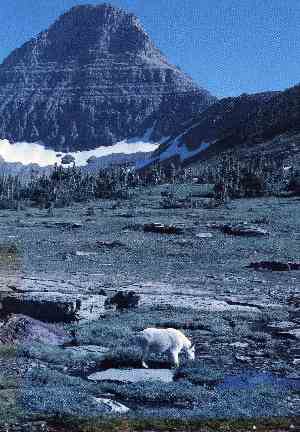 |
As far as routes, we are especially fond of four. If you have to go in June because your kids will be off to sports camps or family vacations later in the Summer, backpack across the Southern side of the park. Use Autumn Creek Trail, Firebrand Pass and Ole Creek Trail from East Glacier to Essex. Stay either at the Essex Lodge or in one of the caboose units right on the Continental Divide. Catch the train back home from Essex. For a good trip in early July, we like the Two Medicine area. After two nights and a day at Glacier Park Lodge to get acclimated, you can arrange for a ride 10 miles North to the Two Medicine Lake Campground. From there, several great backpacking routes head up over passes in various directions, the best of which takes you to Pitamakin Lake, from which you spend a few days hiking out the North Fork Cutbank drainage to the campground and ranger station. Our third favorite is accessed on the Northwest side of the park. It's a day's drive from East Glacier to the Bowman Lake Campground & Ranger Station. Take the Bowman Creek Trail up to Browns Pass and down the Boulder Creek Trail toWaterton Lake Ranger Station. You can either hike down the lake, another full day, or take the passenger ferry down to Waterton Lakes Lodge, where we recommend a night's stay before shuttling back to East Glacier. For this trip you'll need passport and papers, since Waterton Lodge is in Canada. This is a five or six day trip depending on whether you hike the lake or ferry out. But the greatest one week backpacking trip in Glacier, a seven day epic, starts from the Hanging Gardens Visitor Center on Going to the Sun Highway. Park there. Hike one day in on the Highline Trail to Granite Park Chalet and spend a night. Then continue North along the Continental Divide on Highline Trail all the way to Waterton Lake. This is a late July - August trip. It may be the most spectacular backpacking route in North America. |
Another aspect of a Glacier Park trip is the Blackfoot Reservation running along the Eastern boundary. If you stay at Glacier Park Lodge for a night or two, as we recommend, you'll probably meet some of the Blackfeet, since the park hires them to appear as guest speakers. They present dancers, music, history, religion, art, and other aspects of their Northern Rockies culture, usually right at the massive fireplace in the center of the lodge. The Blackfeet were initially very welcoming to the white man. When the Lewis & Clark expedition entered their territory at Three Forks, the Blackfeet sent an expedition to greet them and exchange gifts. Unfortunately, the next night, one of the Blackfeet was shot by one of the boatmen when he tried to come aboard to inspect the strange craft, which the Blackfeet had never seen before. From that point on, the Blackfeet declared their vengeance on whites, and they defended their homeland with great intensity for over a century. The heart of the Blackfeet homeland was the land that is now Glacier National Park, and the plain just east of the park was where they maintained their Winter villages for a thousand years. Perhaps because it contained no minerals, perhaps because it was so far North, or perhaps because of the fierce Blackfeet resistance, this tribe was one of the few allowed to retain land their ancestors were buried on. The Blackfeet retain their own high school, and many of them work in the tourist trade in the national park or surrounding area. The town of Browning is more prosperous than many reservation centers around the nation, and while there are many modern houses and buildings, a significant number of Blackfeet persist in living all of part of the time in traditional high plains shelters like the ones shown at right. In Browning, in the town of East Glacier, and in the lodge gift shop, authentic Blackfeet native crafts are sold. On the reservation and in Browning, however, the Blackfeet do not appreciate having their photos taken, by a camera, a cell phone or any other device. |
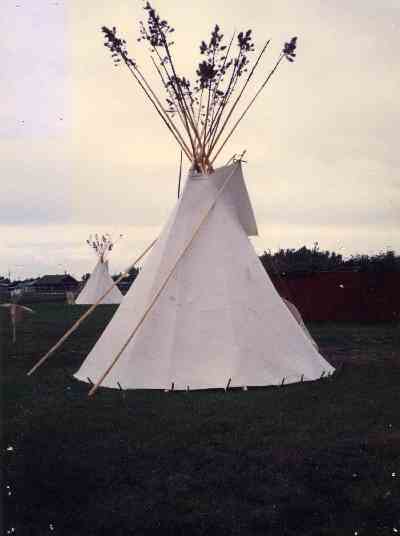 |
|
|||
|